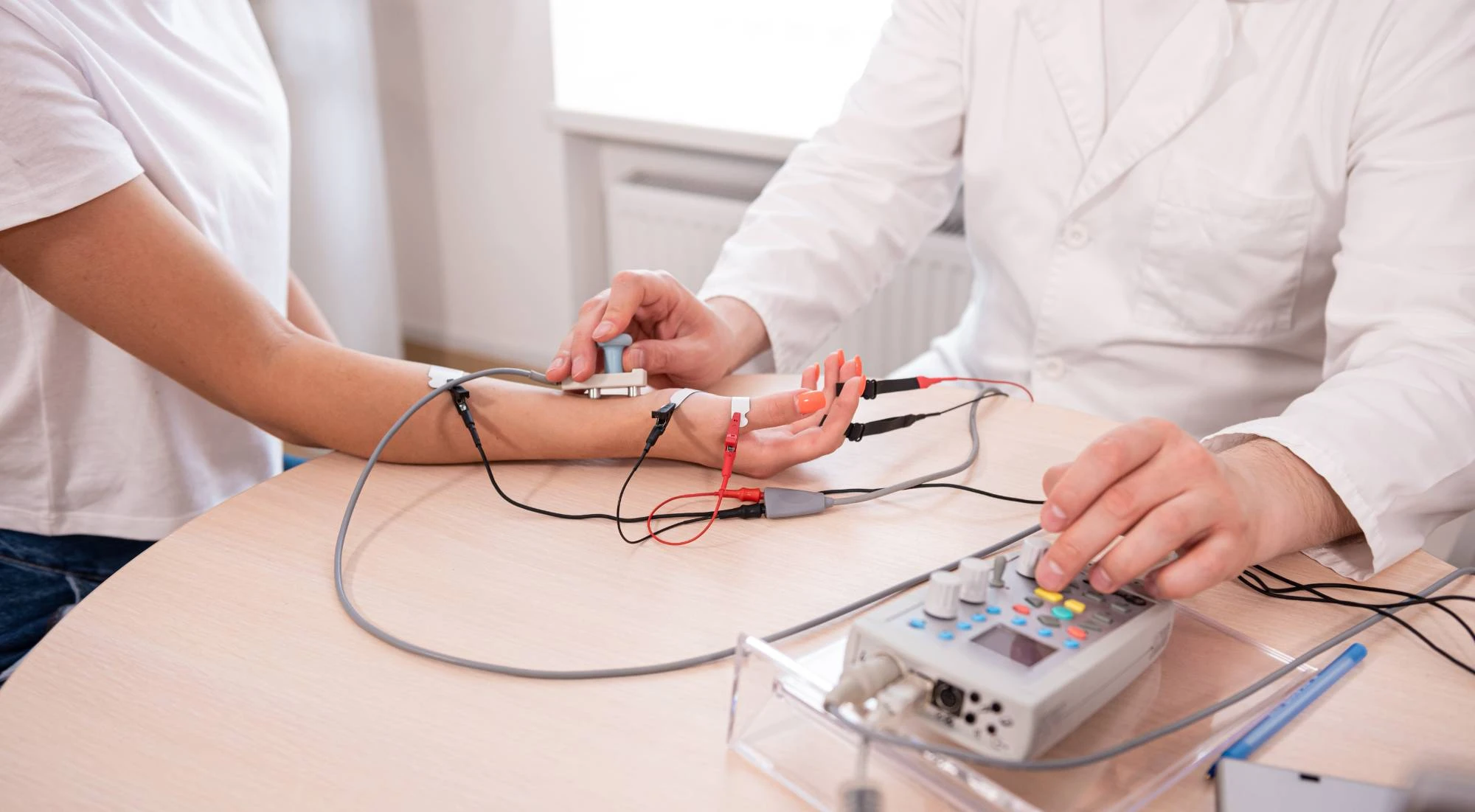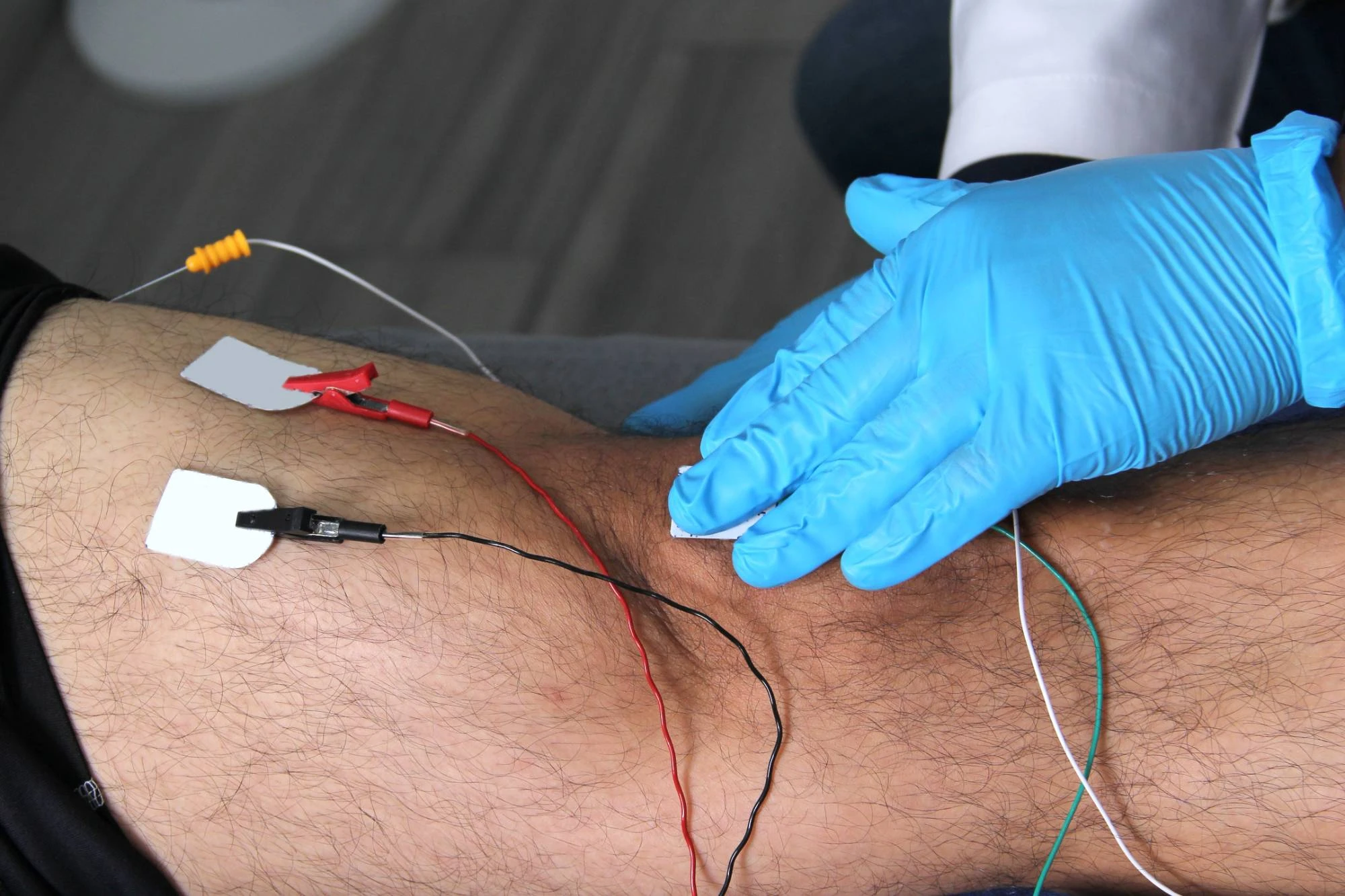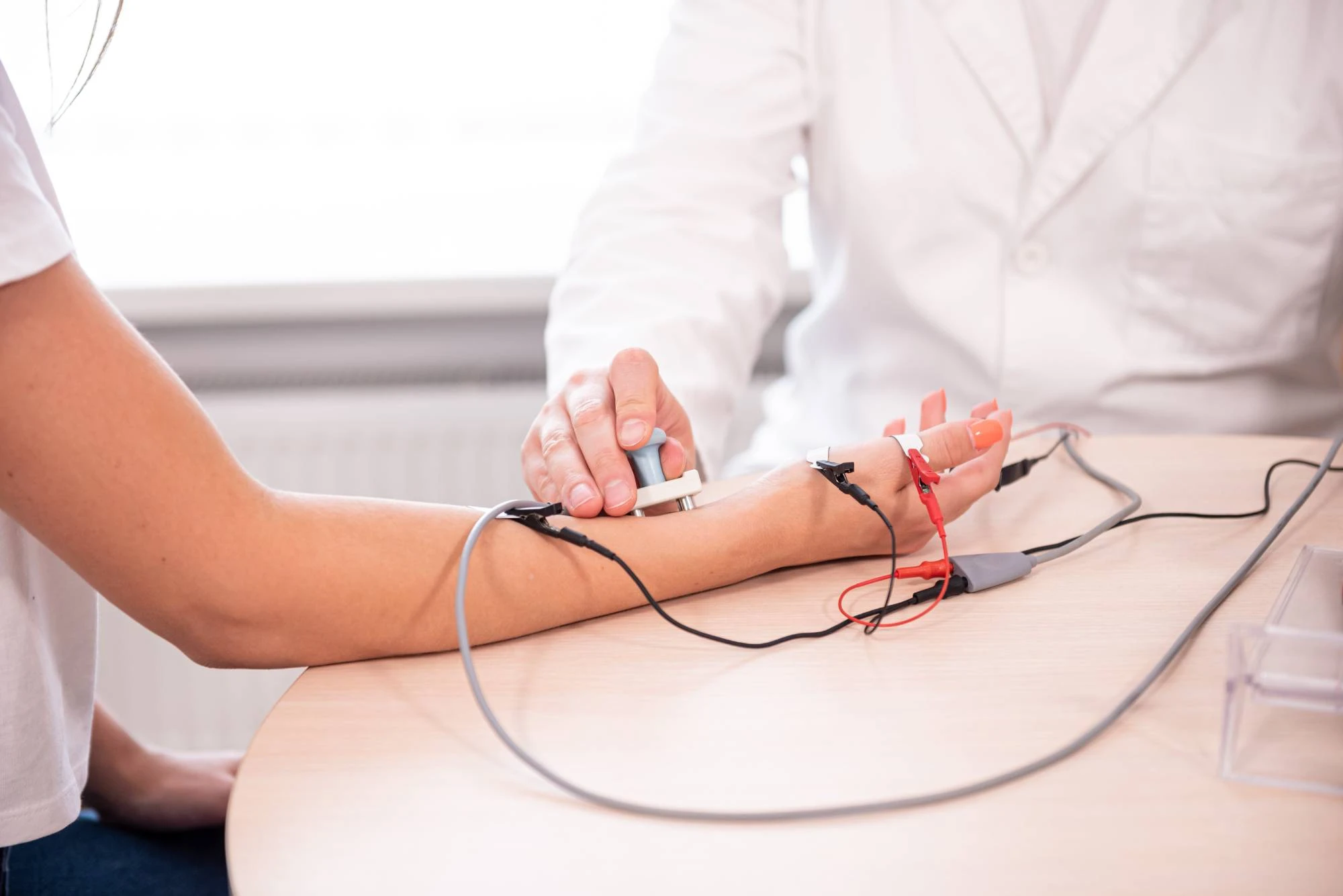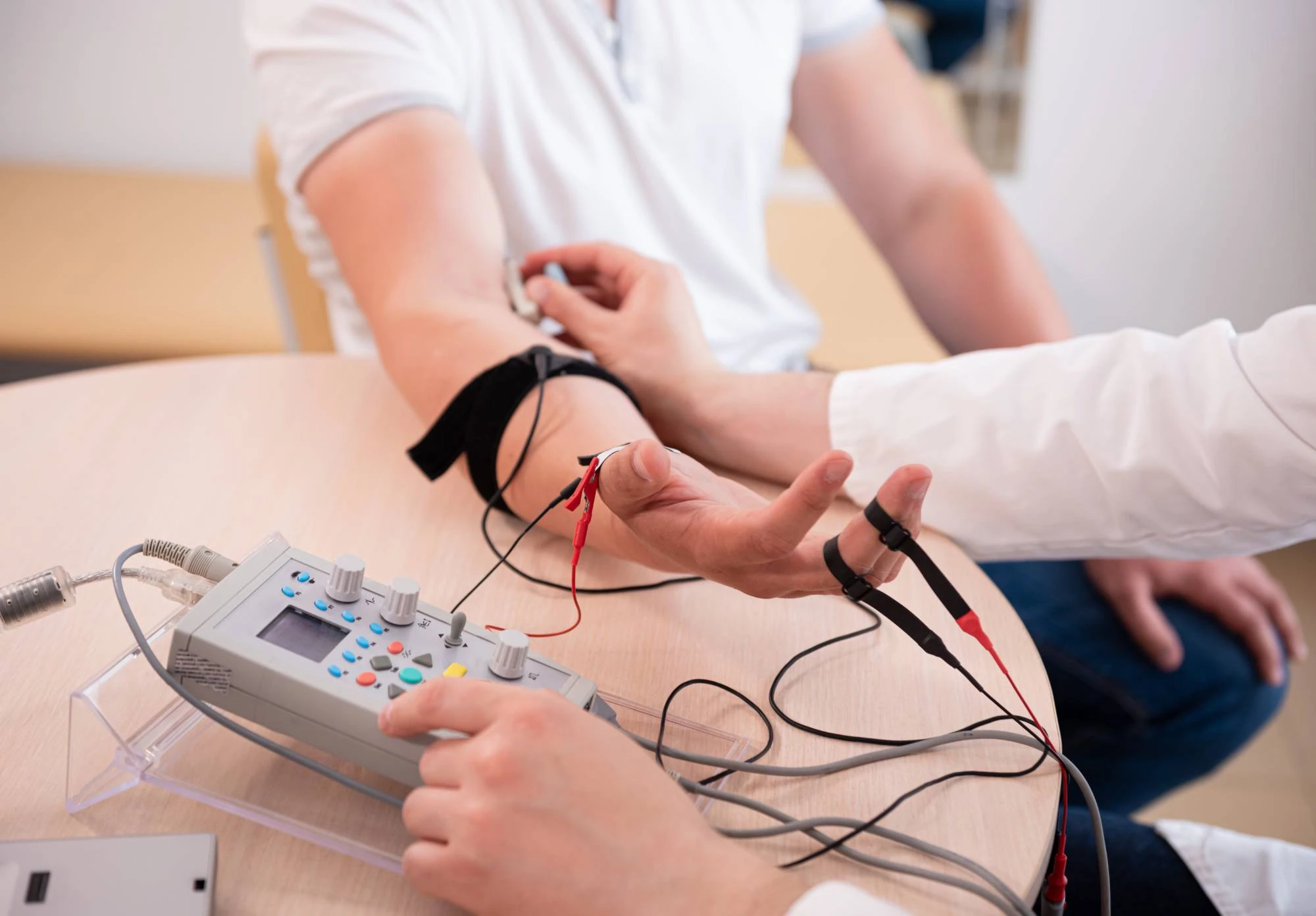Professional electromyography testing that pinpoints exactly what’s causing your numbness, tingling, or muscle weakness.

Reviews

You’ve been dealing with symptoms that don’t make sense. Numbness that comes and goes. Tingling that disrupts your sleep. Muscle weakness that’s affecting your daily routine.
EMG testing gives you the definitive answers you need. Instead of guessing about what’s wrong, you’ll know exactly which nerves or muscles are affected and how severe the problem is.
This isn’t about managing symptoms anymore. It’s about understanding the root cause so you can address it properly. Whether it’s carpal tunnel syndrome, sciatica, peripheral neuropathy, or another nerve condition, EMG testing provides the clarity that leads to effective treatment.
NY Spine Medicine brings specialized expertise in nerve and muscle diagnostics to Golden Beach residents. We focus specifically on conditions affecting the spine, nerves, and related musculature.
We understand that nerve symptoms can be complex and concerning. That’s why we use advanced electromyography equipment and nerve conduction study techniques to provide accurate, reliable results.
Located conveniently for Golden Beach patients, NY Spine Medicine has built a reputation for thorough diagnostic work and clear communication with both patients and referring physicians.

The EMG testing process starts with a consultation about your symptoms and medical history. We need to understand exactly what you’re experiencing and when it occurs.
During the nerve conduction study portion, small electrodes are placed on your skin to measure how well electrical signals travel through your nerves. This part tests nerve function and identifies any areas where signals are blocked or slowed.
The electromyography portion involves inserting a thin needle electrode into specific muscles to measure their electrical activity. This shows whether muscle weakness is due to nerve problems or muscle disorders. The entire process typically takes 30-60 minutes, and you’ll receive results that clearly explain what’s happening with your nerves and muscles.

Ready to get started?
Your EMG testing includes both nerve conduction studies and electromyography to give a complete picture of your condition. The nerve conduction study measures how fast and strong electrical signals travel through your nerves, while the EMG portion evaluates muscle response and function.
The testing can diagnose conditions like carpal tunnel syndrome, ulnar neuropathy, radiculopathy, peripheral neuropathy, and various muscle disorders. You’ll receive detailed results that explain exactly which nerves or muscles are affected and the severity of the problem.
Results are coordinated with your referring physician or specialist to ensure you get appropriate follow-up care. The goal is not just to identify the problem, but to provide information that leads to effective treatment and symptom relief.

New York:
Florida:
Support